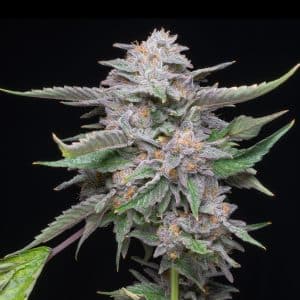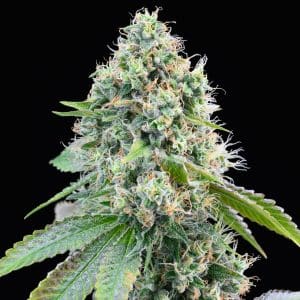Free Khalifa Mints seeds on orders over $150!

Light is an essential component a cannabis plant must have to thrive. In photosynthesis, a plant can transform the energy from light into the energy it needs to produce chemicals. It allows the plant to expand and flourish, and in the case of cannabis, it also provides the fuel for the development of buds. The sun’s power may be harnessed while cultivating plants outside; however, when growing cannabis plants indoors, sunlight is imitated via grow light bulbs, which attempt to show a spectrum of light identical to that of the sun.
Grow lights give the grower complete control over the amount of light their plants are exposed to, allowing them to ensure that their plants receive the same amount of light each day. It eliminates the need for the grower to deal with issues such as inclement weather or cloudy days, which can occur in an outdoor environment.
Some cannabis grow lights are more costly than others, but those more expensive tend to be more efficient, resulting in cost savings. Some grow lights are small in weight, others are bulky and have numerous components, and some are better suited for young or older plants.
Because there are so many types of cannabis lights available, it may be challenging to know where to start looking for them. The following is a guideline for the most common grow lights available.
Below is more detail about HID (high-intensity discharge) bulbs, under which MH and HPS lights are classified. In contrast to regular light bulbs, which include a filament that warms up when electricity is sent through it, the bulbs in these lamps are sealed capsules carrying a gas.

A high-intensity discharge (HID) bulb produces illumination by using an arc between two nodes within the bulb, and it is the gas within the bulb that differentiates MHs from HPSs. Reflective hoods for HID lights are often more costly than the bulbs themselves. High-intensity discharge (HID) lights have been the industry standard for decades for growing cannabis indoors. Light-emitting diodes (LEDs) are now swiftly catching up.
Both kinds of HIDs are cheap to acquire yet have high energy consumption. High-intensity discharge lights (HIDs) provide a lot of light and heat, both of which are necessary for the plant’s development and growth. However, they generate heat, feature heavy metals, and are prone to ballast failure.
Due to their cheap cost, however, HID lights are a good option for those new to indoor growing and unsure how frequently they will engage in this activity. HID reflector hoods, as well as MH and HPS bulbs, are available at any garden center.
These bulbs are often used for vegetative development because of their blue hue, mercury, and metal halide content. To control the flow of current, they need ballast.
Whereas traditional ballasts were physically large and cumbersome, modern digital ballasts are compact and lightweight.
These high-intensity discharge (HID) lights are often used for blooming plants because of their yellow/orange light, which is produced by a combination of sodium, mercury, and xenon. Some cultivators use MH bulbs for seedling growth, then convert to HPSs for blooming growth, all while keeping the same hood over the plants. Ballast is necessary for these bulbs as well.
Metal halide (MH) HID bulbs provide cool light suited to the vegetative cannabis phase. In contrast, high-pressure sodium (HPS) HID bulbs have a considerably broader spectrum and are best suited for the blooming phase. These lights for cannabis generate heat; thus, good ventilation and cooling systems are necessary. Additionally, newer bulbs should be maintained at a greater distance than older bulbs, and after two years, you should seriously consider changing them because of the decreased light output.
Both MH and HPS bulbs have different recommended spacings in the grow room, depending on their wattages. It should always be at its brightest setting when first turning on the light. Assuming your grow room’s ventilation is adjusted appropriately, you may begin placing your 250W bulb at a distance of 35cm and work your way closer to the canopy until you’re only 25cm from the buds after the blooming stage. Start at 50cm with a 600W bulb and work your way down to 30cm; with a 1000W bulb, give yourself at least 80cm of space.
Although MH and HPS are best used at different times in the plant’s life cycle, they may be hung at about the same distance from the plant’s canopy. Both grow lights for cannabis perform better the closer they are to the crop, but it is still a good idea to try them out before you begin working with them for the first time.
If you’re a first-time grower or just trying something new, you may want to set the light at its highest setting, to begin with. Doing so may progressively reduce it until you’re sure your plant isn’t receiving too much energy. At all times, try to maintain a distance of 30–38 cm between your light and the canopy’s peak.
CFLs, also known as compact fluorescent lamps, are a kind of fluorescent lighting that looks and functions very similarly to traditional fluorescent lighting but is far more compact. They are often referred to as “T5s” when used for cannabis cultivation. The “T” stands for “tubular,” and the “5” refers to the diameter of the device, which is “5/8.” There are daylight bulbs and warm white bulbs, with the daylight bulbs superior for vegetative development and the warm white bulbs excellent for blooming.

These fluorescent lights are lovely for vegetative development and are inexpensive and energy efficient. Because they don’t produce much heat and won’t cause the fragile seeds to get charred, they are handy for germinating and growing young seedlings. They won’t cause a significant increase in your monthly power costs.
Growers often turn to another kind of lighting when it comes time to finish their plants since compact fluorescent lamps (CFLs) do not perform well enough for blooming plants. The light produced by CFLs is not strong enough to allow plants to put on sufficient mass.
The length of the long fluorescent bulbs that can typically be accommodated in a fixture may range anywhere from 4 to 12, with 8 being the conventional number. Most lighting for cannabis fixtures is constructed with a reflecting substance that directs light downward, where plants may absorb it. CFLs are much like HIDs in that they can be found at any local grow store.
When comparing LEDs (light emitting diodes) to HPSs (high-pressure sodium), MHs (metal-halide), and CFLs (compact fluorescent lamps), it is clear that LEDs represent the future of the cannabis growing industry. Although the upfront cost of LED lights for cannabis is more, these bulbs are more energy efficient, safer for the environment, and cheaper to operate. Since LEDs are healthier for the environment, several municipalities provide financial incentives to commercial growers that adopt them.

One LED may often be utilized for vegetative and blooming development, and it runs cooler than HIDs, so you might not need additional cooling equipment in your grow room. The spectrum of specific high-end LEDs may be adjusted to suit different stages of development.
Even if natural LED lights are constantly replaced by knockoffs, choosing a quality product is still important. Many inexpensive LEDs don’t provide a plant-friendly light spectrum, which might stunt their growth. LEDs’ long-term efficiency has attracted many new businesses vying for customers’ attention. Choose the right size cannabis grow lights for your grow room.
Though LED systems tend to run cooler than HID bulbs, they still need some cooling to prevent your plants from being scorched. The light pressure produced by LED lights is relatively high, even at low temperatures. In addition to the heat, this light intensity may induce light burn and leaf browning.
Manufacturers often suggest the best distances from plants for various brands of LED grow lights. An excellent place to begin is in the center of the recommended range, and from there, you may move outward as you see your plants grow. If you see any leaves becoming pale or with burnt tips, reduce the intensity of the lighting. You may bring the LED panel closer to your plants if they seem content, but not so near that the top leaves begin to fade, yellow, or turn brown.
At least 70 centimeters of space should be between the canopy and high-powered LED panels (more than 300W), and this distance may be reduced throughout the blooming period. There should be a 30–70 centimeters gap between plants and 200–400 watt LED lights and 50–80 centimeters between plants and 450–600 watt LED lights. Systems with a higher wattage need to be situated farther away. When switching to a new light source, it’s essential to keep a watchful eye on your plants.
So, which cannabis lights are ideal for indoor plant growth? This choice will be impacted by several things, including the available space, the specific strain, and your budget.
Best Selling Cannabis Seeds





Offers
Information
Get the best from your plants
Growing At Home
Growing At Home
Grow stages
THCA/D9 (out of stock)
Troubleshooting
This product is not for use by or sale to persons under the age of 18. This product should be used only as directed on the label. It should not be used if you are pregnant or nursing. Consult with a physician before use if you have a serious medical condition or use prescription medications. A doctor’s advice should be sought before using any hemp products. All trademarks and copyrights are property of their respective owners and not affiliated with nor do they endorse this product. These statements have not been evaluated by the FDA. This product is not intended to diagnose, treat, cure or prevent any disease. By using this site you agree to follow the Privacy Policy and all Terms & Conditions printed on this site. All products contain less than 0.3% Cannabinoid-compliant with applicable Federal Laws. Please make yourself aware of any and all applicable laws regarding hemp in your jurisdiction. Premium Cultivars accepts no liability or responsibility regarding germination laws in any specific locale state or national jurisdictions.THCA products are not available for shipment to the following states: Hawaii, Idaho, Minnesota, Oregon, Rhode Island, Utah, Vermont *Note: Products with Total THC content above 0.3% must not be shipped to these states.
We want to help you get your hands on the seeds you want, take 20% off your next purchase when you enter your email below!
We want to help you get your hands on the seeds you want, take 20% off your next purchase when you enter your email below!